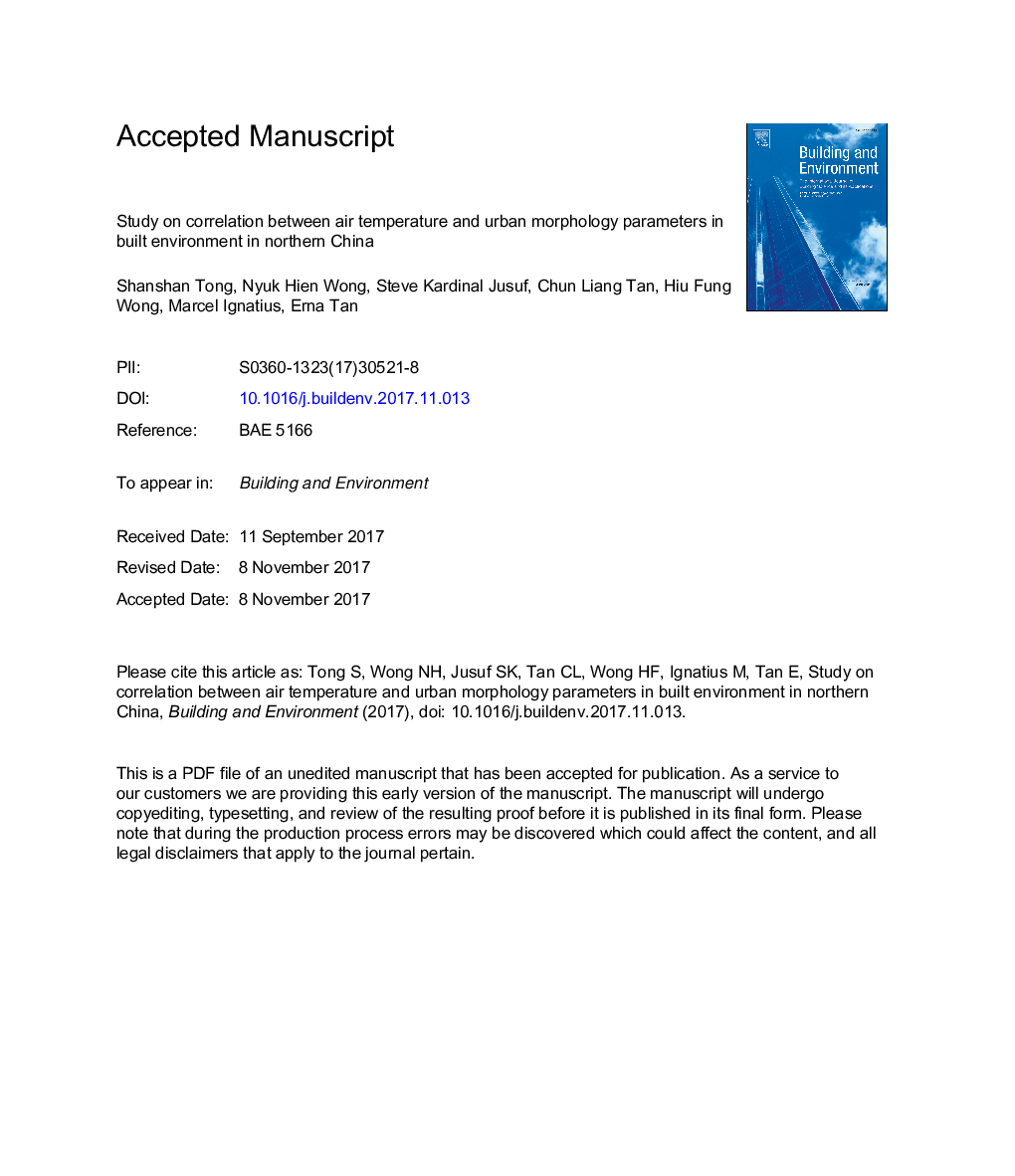| Article ID | Journal | Published Year | Pages | File Type |
|---|---|---|---|---|
| 6698520 | Building and Environment | 2018 | 33 Pages |
Abstract
Field measurement was firstly carried out to record the air temperature at 46 points within an 8-km2 urban area continuously in Tianjin city, China, from January 2015 to July 2016. Weather conditions at a nearby meteorological station were also measured. A GIS model was built up to extract the urban morphology parameters at 46 measurement points, such as the Green Plot Ratio (GnPR), Sky View Factor (SVF), pavement area percentage (PAVE), building area percentage (BDG), etc. Using multilinear regression analysis, models were proposed to correlate air temperatures with urban morphology parameters and weather parameters in both summer and winter seasons. The analyzed air temperatures included daily maximum (Tmax), minimum (Tmin), average (Tavg), daytime average (Tavg-day) and nighttime average (Tavg-night) temperatures. Models were validated by comparing the air temperatures estimated by proposed models with the results measured on the days different from those selected for model development. Parametric study was conducted to investigate the impact of urban morphology parameters on air temperatures. In summer, it was found that increasing GnPR by 0.5 could reduce Tmin and Tavg-night by 0.7 °C and 0.5 °C respectively. In winter, only Tavg, Tmin and Tavg-night were affected by urban morphology, and they increased with taller building height and narrower street width.
Related Topics
Physical Sciences and Engineering
Energy
Renewable Energy, Sustainability and the Environment
Authors
Shanshan Tong, Nyuk Hien Wong, Steve Kardinal Jusuf, Chun Liang Tan, Hiu Fung Wong, Marcel Ignatius, Erna Tan,
